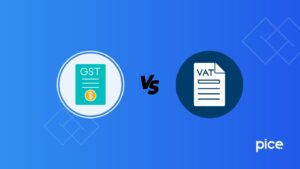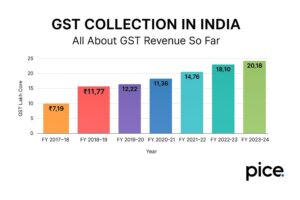Utilization of Input Tax Credit Under GST
- 31 Aug 24
- 12 mins
Utilization of Input Tax Credit Under GST
Key Takeaways
- Input Tax Credit (ITC) helps businesses reduce their GST liability by allowing them to offset taxes paid on inputs against their output tax obligations.
- To maximize ITC utilization, businesses should strategically apply available credits to reduce CGST, SGST, and IGST liabilities, following both the old and new methods of credit allocation.
- Certain items and services, like motor vehicles, food and beverages, and works contract services, are excluded from ITC eligibility, making it essential to understand these exceptions.
- Special cases such as job work, ISD distributions, and business transfers have specific ITC rules that allow for the transfer or optimization of credits.
- Optimizing ITC involves careful planning to ensure minimal cash outflow by utilizing available credits effectively across different tax liabilities.
The utilization of Input Tax Credit (ITC) is a vital aspect of the GST regime, significantly reducing tax liabilities on outputs sold. In other words, ITC utilization reduces the output liability of a registered person.
Similarly, businesses can effectively lower their CGST and SGST liabilities by strategically optimizing input credit utilization. Understanding both the old and new methods of credit utilization is essential for maximizing benefits.
Here, you can explore various strategies for optimizing ITC utilization with the availability of input tax credit, ensuring maximum credit utilization and seamless tax compliance.
Input Tax Credit in GST
Input Tax Credit (ITC) is one of the important components under the Goods and Services Tax regime. It ensures an uninterrupted flow of credits in the GST chain in the current tax period. Further, it standardized the tax system across India, removing the cascading effect of taxes by reducing the outward tax liability.
The Input Tax Credit is the tax that buyers or a registered person can claim for the purchase of goods and services (including capital goods) for business operations. It reduces the output tax liability, thereby enabling purchasers to pay lower net tax payable amounts for business compliance. In other words, it reduces the amount of output tax payable to a registered person. To claim ITC, a registered person must hold a proper invoice or debit note issued by a registered supplier.
💡 If you want to pay your GST with Credit Card, then download Pice Business Payment App. Pice is the one stop app for all paying all your business expenses.
You can easily reduce the actual tax liability or tax liability payable by claiming input tax credit as it is the GST you paid on normal invoices. Further, payment of tax liability becomes seamless with ITC.
Maximum ITC Utilization for GST Liability
The maximum GST input tax credit that you can utilize to pay GST liability is 99%, indicating that you should pay 1% in cash within the specific time limit. Taxpayers with monthly taxable supplies exceeding ₹50 lakhs (not exempt supplies or zero-rated suppliers) can utilize ITC for GST liability.
However, there are certain taxpayers who cannot utilize GST input tax credit or electronic credit ledger. Here are the taxpayers who cannot utilize ITC for GST liability are as follows:
- A registered taxpayer who paid income tax exceeding ₹1 lakh in the last two financial years in belated IT annual returns for himself, proprietor, any two partners, managing directors, trustee or board, etc.
- Registered taxpayers who receive a refund claim of unutilized input tax credit under GST returns exceeding ₹1 lakh for zero-rated supplies without tax payment or inverted tax structure.
- A registered taxpayer who paid over 1% of GST liability using an electronic cash ledger for all the tax periods in the present financial year.
- Government departments, public sector undertaking or PSU, statutory bodies and local authorities
Method of Credit Utilization
There are both old and new methods of utilization of credit. The following is the old method of credit utilization or allocation of credit:
- The amount of ITC for Integrated Goods and Services Tax (GST for inter-state supplies) should be utilized first for IGST payment and then for CGST payment and SGST payment applicable to intra-state supplies.
- The amount of ITC for Central Goods and Services Tax should be utilized for CGST payment first and then IGST applicable to inter-unit transfers of goods and services. However, you cannot utilize it to pay State Goods and Services Tax (SGST).
- You should utilize the ITC for SGST to pay State or Union Territory Tax first and then IGST. This ITC cannot be used for payment of CGST.
- For SGST, ITC calculation is undertaken state-wise. In other words, you cannot utilize SGST to pay SGST of another state.
- You cannot use ITC to pay interest, payments, feeds or any similar amount payable under the GST Act.
Alternatively, there is a new method of utilization of input tax credit as per the Rule 88A of the CGST Rules, which is as follows:
Utilizing IGST Credit
You need to use IGST credit first against IGST liability. After availment of credit, if IGST credit is still available, you can use it against CGST and SGST liability in any order or proportion. If there is a balance in IGST credit, it will be carried forward to the next tax period. After IGST credit is exhausted, you can use CGST and SGST credits.
Utilizing CGST Credit
You have to use CGST credit first against CGST liability. After you nullify the CGST liability against CGST credit, you can utilize the same for IGST liability if applicable. In a similar way to IGST credit, the balance of CGST credit gets carried forward to the following tax period.
Utilizing SGST Credit
You must utilize SGST liability against SGST credit first before you use the same against IGST liability. The balance, if any, will be carried forward to the next tax period.
The entire process helps reduce the fund settlement needs between the Central Government and State Government. You will find the above features on the GST portal in the New ITC utilization system to claim credits for a particular tax period.
The matrix of utilization of input tax credit in the new ITC utilization system is as follows:
| ITC on Account of | IGST Liability | CGST Liability | SGST Liability |
| IGST ITC | 1 | 2 - In any order and manner between CGST/SGST, till IGST is completed and exhausted | 2 - In any order and manner between CGST/SGST, till IGST is completed and exhausted |
| CGST ITC | 4 | 3 | X Not Permitted |
| SGST ITC | 6 | X Not Permitted | 5 |
Items on Which ITC Is Not Allowed
There are several items on which ITC is not allowed. Here are the items for your knowledge:
- Motor vehicles with seating capacity not exceeding 13 persons, goods transport agencies, vessels and aircrafts. However, these are included when motor vehicles and conveyances are sold or supplied further, used for transport of passengers and goods, imparting training on driving and flying.
- Services of general insurance, servicing, repair and maintenance of motor vehicles, vessels and aircrafts.
- Food and beverages, outdoor catering, beauty treatment, health services, cosmetic and plastic surgery. However, if they are used to deliver the same category of service as a part of composite supply, ITC is allowed.
- Club membership, health and fitness centre
- Rental cab, life insurance and health insurance except if it is mandatory for the employer to provide it to the employees based on specific government rules, goods and services are used for further supply, leasing, renting or hiring motor vehicles, vessels or aircrafts for supply.
- Travel benefits for employees pertaining to vacations and home travel concessions
- Works contract service for construction of immovable property other than plant and machinery
- Goods and services used for the construction of immovable property irrespective of use for personal or business purposes
- If tax has been paid under the composition scheme for goods and services
- Goods and services used for personal use
- If a non-resident taxable person receives goods and services except for goods that he or she imports
- Lost goods, goods stolen, written off destroyed, disposed of, gifts or free samples
- If tax paid due to non-payment, short payment of tax, excessive refund or ITC utilized or claimed by fraud, willful misstatements or suppression of facts followed by confiscation and seizure of goods
- Standalone restaurants that charge 5% GST
- Expenditure towards Corporate Social Responsibility initiatives
Special Cases of ITC (Credit on Input Tax)
Take a look at the following cases and understand when ITC can be claimed.
ITC on Job Work
When a principal manufacturer sends goods for further processing to a job worker, the principal manufacturer can claim credit of tax paid on the purchase of goods sent to the job worker irrespective of the fact that goods are sent from the place of business or directly from the place of supply.
ITC Provided by Input Service Distributor (ISD)
An input service distributor is usually a head office, branch office or registered office of a GST-registered person. ISD collects ITC on all purchases and further distributes to the recipients of input tax credit under heads like CGST, SGST/UTGST, IGST or cess.
ITC on Transfer of Business
This applies to amalgamations, mergers and transfer of business when the transferor can avail ITC and pass it on to the transferee within the relevant time limit of transfer of business.
Strategies for Optimizing ITC
Since there are several ways to apportion IGST ITC between CGST and SGST, the following strategies should be adopted.
- If CGST credits are available, utilize IGST credit against CGST liability.
- When you have SGST credit available, use IGST credit against SGST liability.
- The goal needs to be a minimum payment of cash for CGST or SGST liabilities.
The Bottom Line
Considering that you know about the utilization of input tax credits now, you can easily adopt strategies that optimize ITC utilization. This will help you reduce your tax liability for your tax heads by utilizing CGST credits against IGST liability. Further, you can utilize SGST credits against IGST liability if you have a balance available to optimize ITC utilization.
FAQs
What is utilization of ITC in GST?
What is the time limit for utilization of input tax credit under GST?
What is the difference between availment and utilization of ITC?
Utilization of ITC refers to the application of the availed ITC to offset GST liabilities on outward supplies. This means using the ITC to reduce the amount of GST that must be paid in cash.
What happens if excess ITC is availed but not utilized?
What is interest on excess utilization of ITC?
What is the manner of availment and utilization of ITC as per Sec 16?
1. ITC can only be availed if the taxpayer has a valid tax invoice or debit note and has received the goods or services.
2. The taxpayer must have filed the necessary GST returns, and the supplier must have paid the GST to the government.
3. ITC should be utilized in a specified order: IGST credit first, then CGST and SGST/UTGST in proportion to the respective liabilities, with CGST and SGST credits only being used for their respective liabilities.
 By
By 

















